| Rye %: | 70% |
| Stages: | Sponge, final dough |
| Leaven: | Rye sour culture, yeast |
| Start to Finish: | 17-20 hours |
| Hands-on Time: | 30-40 minutes |
| Yield: | One dozen 3½ ox/100 g rolls |
Not too long ago, one of my friends, a transplanted Berliner, announced that he and his wife were going on vacation in the mountains of eastern Austria. The news came as music to my ears, because for a long time I’d been trying to get my hands on blue fenugreek leaves, a spice that’s virtually impossible to find in the US. Known as Trigonella caerulea (blue trefoil) to botanists, it’s a key ingredient in the breads of South Tyrol, where it’s variously called Blauklee (“blue clover”), Schabzigerklee (“shoddy clover”), Zigeunerkraut (“gypsy herb”) and Brotklee (“bread clover”). I asked if he’d be kind enough to pick some up for me.
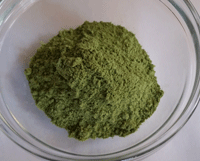 Sure enough, when he and his wife returned home, he presented me with 100 grams of a bright green powder that resembles Japanese green tea (matcha) and which has an intense, hard-to-define aroma that reminds me of nothing so much as a cross between new-mown hay and garam masala. Up until that point, I’d been using the leaves of Brotklee’s more robust cousin, Indian fenugreek (methi) in my South Tyrolean breads, notably the Vinschgau Twins (Vinschger Paarlen) that I included in The Rye Baker. Now, I could use the real thing.
Sure enough, when he and his wife returned home, he presented me with 100 grams of a bright green powder that resembles Japanese green tea (matcha) and which has an intense, hard-to-define aroma that reminds me of nothing so much as a cross between new-mown hay and garam masala. Up until that point, I’d been using the leaves of Brotklee’s more robust cousin, Indian fenugreek (methi) in my South Tyrolean breads, notably the Vinschgau Twins (Vinschger Paarlen) that I included in The Rye Baker. Now, I could use the real thing.
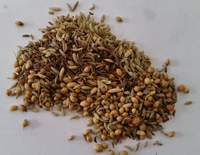 For my experiment, I chose these “Little Breads” of Pustertal, classic South Tyrolean breads that come from a valley in the high Italian Alps just south of the Austrian border. Like many Alpine breads, they’re made from a combination of rye and wheat (in this case, 70/30), are leavened with both yeast and a long-fermented acidifying sponge, and feature a blend of aromatic spices that includes fennel, caraway and coriander as well as the Brotklee that signals their origin. Unlike most of the rye breads I’ve played around with, however, this dough was so loose and sticky, thanks to its 110% hydration, that I didn’t dare let it proof on a floured peel as I normally would have done, but played it safe and used parchment-lined sheet pans instead.
For my experiment, I chose these “Little Breads” of Pustertal, classic South Tyrolean breads that come from a valley in the high Italian Alps just south of the Austrian border. Like many Alpine breads, they’re made from a combination of rye and wheat (in this case, 70/30), are leavened with both yeast and a long-fermented acidifying sponge, and feature a blend of aromatic spices that includes fennel, caraway and coriander as well as the Brotklee that signals their origin. Unlike most of the rye breads I’ve played around with, however, this dough was so loose and sticky, thanks to its 110% hydration, that I didn’t dare let it proof on a floured peel as I normally would have done, but played it safe and used parchment-lined sheet pans instead.
The results were wonderful. The little breads spread on the parchment and developed a beautiful pattern of cracks in the firm, chewy crust. Inside, the high hydration had produced a very open, tender crumb. The flavor profile is subtle and complex, dominated by sour, salt and the slight bitterness of the rye. And yet, the more I chewed, the more clearly the aromatic notes of the spices emerged, finishing with the lingering grassy-curry fragrance of the Brotklee.
I invited my friend over to taste the breads and he and I agreed that only a mild cheese or sweet butter would do them justice; anything stronger would overwhelm their delicacy.
Sponge (Day 1, Evening):
| Ingredient |
Grams |
Ounces |
Baker’s |
| Medium rye flour |
160 |
5.65 |
100% |
| Warm (105°F/41°C) water |
160 |
5.65 |
100% |
| Rye sour culture (100% hydration) |
16 |
0.55 |
10% |
Mix the sponge ingredients by hand, cover and ferment at room temperature (70°F/21°C) 15-18 hours. The sponge will be very bubbly, have a strongly acidic smell and will have begun to fall back on itself.
Final Dough:
| Ingredient |
Grams |
Ounces |
| Sponge |
336 |
11.85 |
| Medium rye flour |
400 |
14.10 |
| Bread flour, unsifted |
240 |
8.45 |
| Warm (105°F/41°C) water |
720 |
25.40 |
| Instant yeast |
6 |
0.25 |
| Salt |
16 |
0.55 |
| Blue fenugreek or Indian methi leaves, ground |
8 |
0.30 |
| Fennel seed, ground |
4 |
0.15 |
| Caraway seed, ground |
4 |
0.15 |
| Coriander seed, ground |
4 |
0.15 |
 In the mixer bowl, combine the final dough ingredients and use the dough hook at low (KA2) speed to mix until the dough is fully blended into a very loose mass that starts to climb the dough hook, 8-10 minutes.
In the mixer bowl, combine the final dough ingredients and use the dough hook at low (KA2) speed to mix until the dough is fully blended into a very loose mass that starts to climb the dough hook, 8-10 minutes.
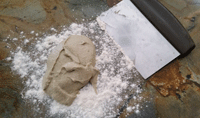 Use a plastic dough scraper to transfer 5 oz/140 g of dough at a time to a generously floured work surface. (I find it easiest to put the mixer bowl on my scale, zero it using the TARE function and then read the amount of dough I remove as a negative number. Remember to re-zero the scale after each piece of dough is taken out.)
Use a plastic dough scraper to transfer 5 oz/140 g of dough at a time to a generously floured work surface. (I find it easiest to put the mixer bowl on my scale, zero it using the TARE function and then read the amount of dough I remove as a negative number. Remember to re-zero the scale after each piece of dough is taken out.)
Use a dough scraper and well-floured hands to shape each piece of dough, which will be very soft and sticky, into a rough round and place it seam side down onto a parchment-lined sheet pan.
Cover the breads and proof at room temperature until they’ve visibly expanded and show wide cracks, 35-45 minutes.
Preheat the oven to 450°F/230°C with the baking surfaces in the middle. Bake until the loaves thump when tapped with a finger and the internal temperature is at least 198°F/92°C, 35-40 minutes. Transfer to a rack and cool thoroughly.
Baker’s Percentages:
| Ingredient |
Grams |
Percent |
| TOTAL FLOUR |
800 |
100.00% |
| Medium rye flour |
560 |
70.00% |
| Bread flour |
240 |
30.00% |
| Water |
880 |
110.00% |
| Salt |
16 |
2.00% |
| Instant yeast |
6 |
0.80% |
| Rye sour culture |
16 |
2.00% |
| Blue fenugreek |
8 |
1.00% |
| Fennel |
4 |
0.50% |
| Caraway |
4 |
0.50% |
| Coriander |
4 |
0.50% |
| TOTAL FORMULA |
1,738 |
217.30% |
| Flour prefermented |
160 |
20.00% |

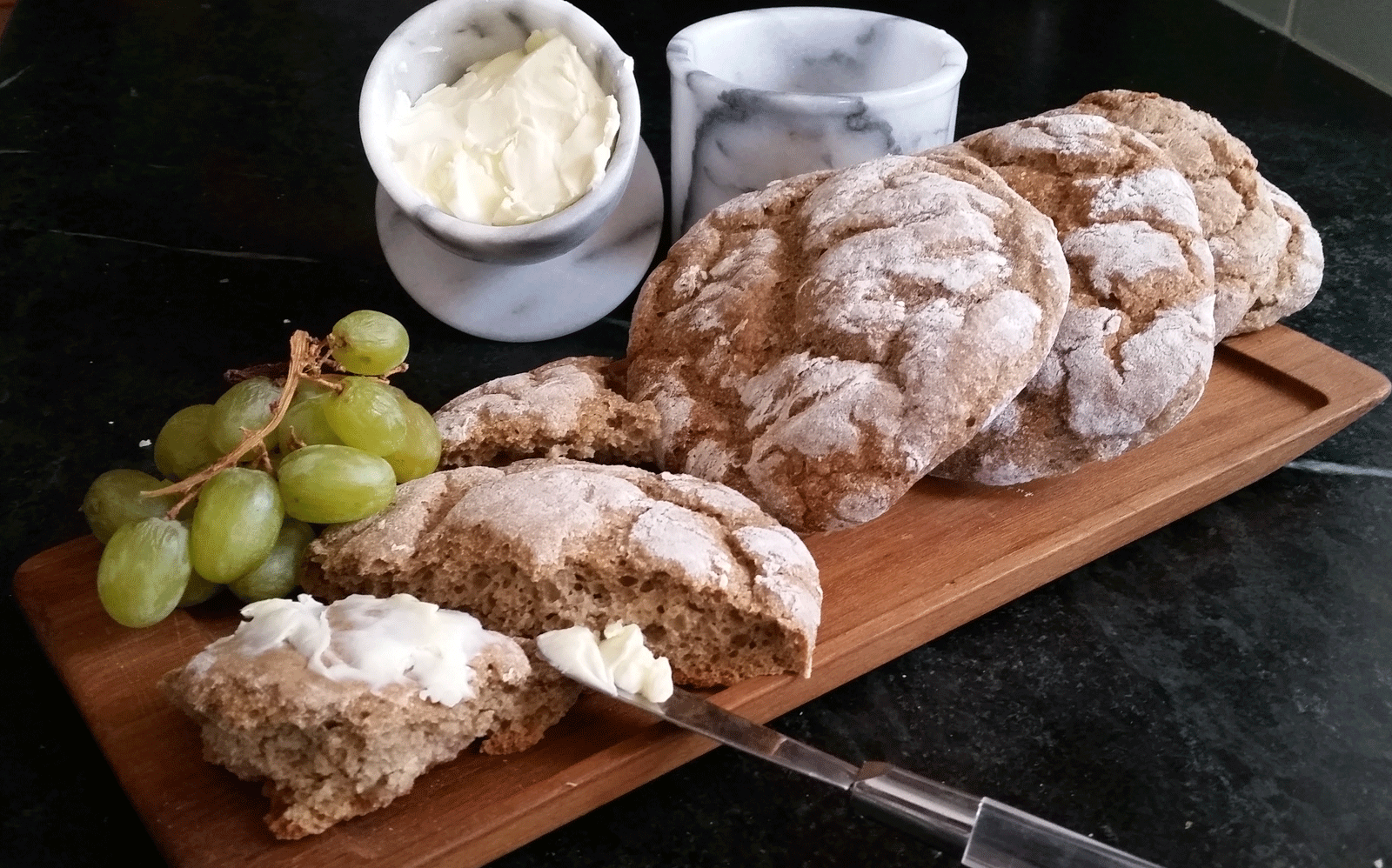
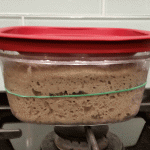
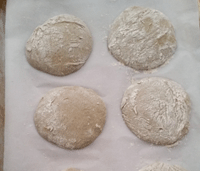
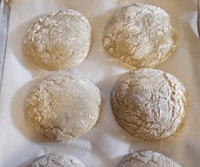
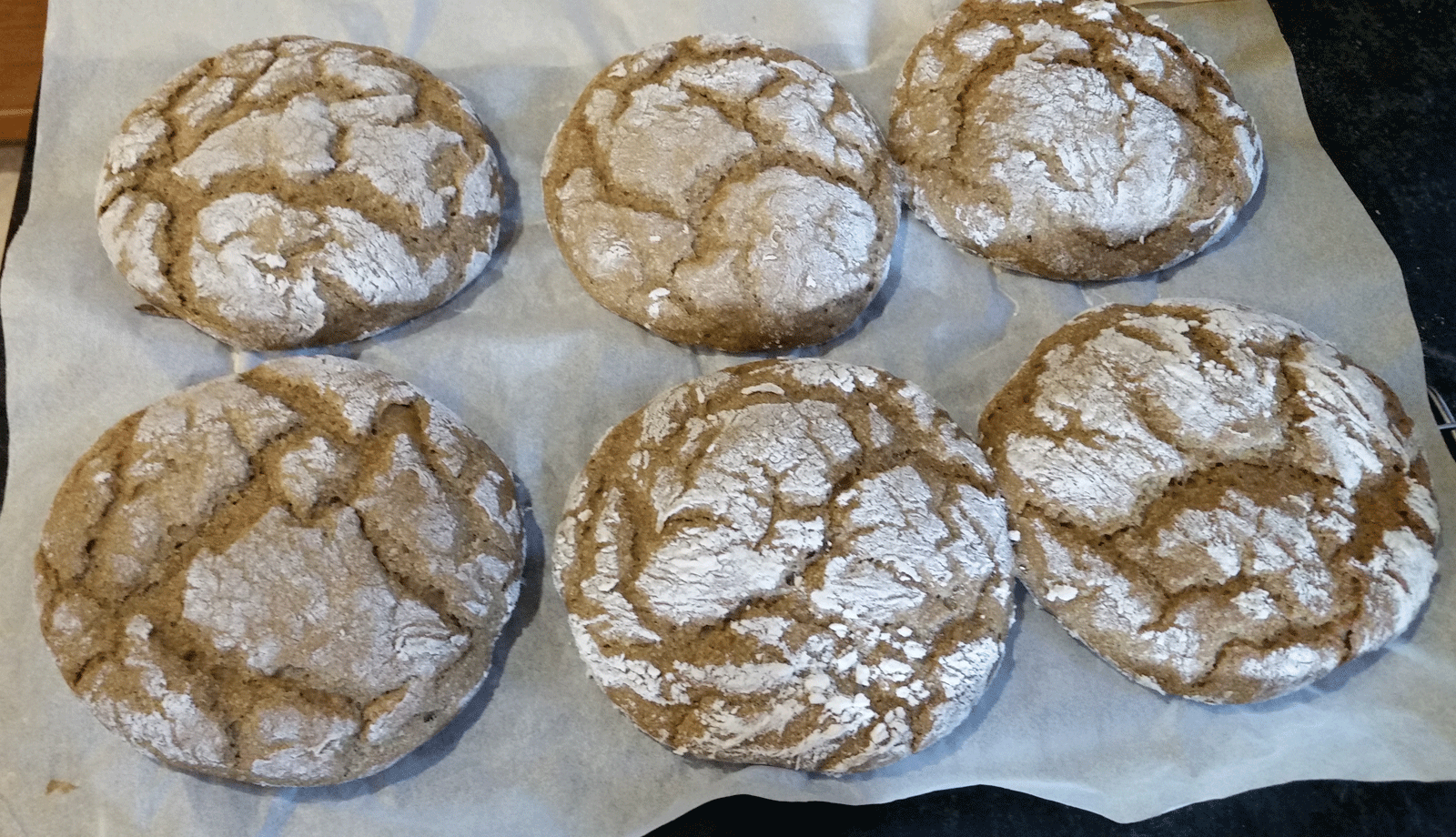
Tom Stevens
November 18, 2016Hi Stanley, they look great I am interested in your thoughts as to how different this blue fenugreek tastes in the final product compared to the Indian fenugreek you used in your recent book? love your blog by the way. Tom
Stanley Ginsberg
November 18, 2016The Indian methi and Brotklee are very similar, with a couple of exceptions: (a) the methi has a somewhat more pronounced flavor and aroma — especially aroma (which I really like, BTW), so a very small reduction (10-15%) of the amount of methi I call for in, say, the Vinschgau Twins recipe wouldn’t be out of line; and (b) the Brotklee is lighter in color than the methi, which is kind of a dark green-brown (think dark olive drab). Other than that, they’re very similar. Based on my experience, both will give South Tyrolean breads their characteristic olfactory and flavor profile.
Tom Stevens
November 20, 2016Hi Stanley, thanks fo the information, it is very much appreciated. When I get to making some ill let you know the the turn out.
Tom
Karin Anderson
December 1, 2016I love those breads!
Stanley, I could have easily got you Schabzigerklee – you find it Germany in every natural food store.
The aroma is really different from regular (brown) fenugreek, didn’t you love the wonderful smell that fills the house when you bake the breads?
Karin
Stanley Ginsberg
December 1, 2016The aroma (which I find wonderfully appealing) fills my spice cabinet, even when the S’klee is well wrapped. It has this amazing mouth-filling fragrance and the breads I make with it — these, Vinschger Paarlen and Schuttelbrot — are really amazing. I have plenty at the moment, and will certainly let you know when I’m close to running out!
Eric Schwarzenbach
January 31, 2021FWIW you can find blue fenugreek leaves on Etsy. I have some on order, but in the meanwhile, made the Vinschgau Twins from your book using blue fenugreek seeds (or seed pods maybe…the Utskho Suneli of Georgian cuisine). It made for delicious aromatic bread even if it was not really the right thing. I look forward to seeing how it comes out with the leaves.
Eric Schwarzenbach
February 19, 2021Update: I’ve finally received my blue fenugreek leaves, and can confirm that the aroma is the same as that from the seed pods (and from the rolls baked using them). So I think I can confirm that the Georgian Utskho Suneli makes a reasonable substitute.